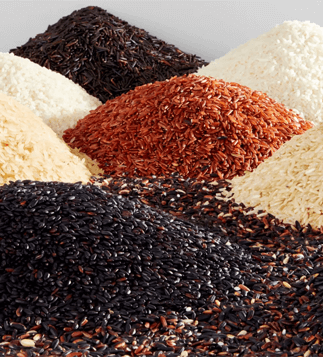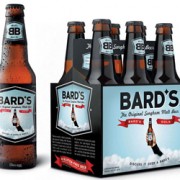Arsenic, Mercury, Lead in Rice? Are Concerns Real?
 Arsenic in rice is a growing concern for people who follow a gluten-free diet, such as those with celiac disease and non-celiac gluten sensitivity. Some tend to eat a lot of rice because it’s affordable and readily available, not to mention a common ingredient in bread, cereal, and other gluten-free products.
Arsenic in rice is a growing concern for people who follow a gluten-free diet, such as those with celiac disease and non-celiac gluten sensitivity. Some tend to eat a lot of rice because it’s affordable and readily available, not to mention a common ingredient in bread, cereal, and other gluten-free products.
- Jane Anderson, verywellhealth.com. Medically reviewed by Carl Victor Crawford, Jr., MD 1
Yet researchers are finding that those who eat a lot of rice may be at risk for consuming unsafe levels of arsenic, a toxic metal that tends to accumulate in rice. Mercury and other heavy metals have been found at higher levels in people who eat gluten-free, too.
This article explains how arsenic absorbed from water and soil can end up in rice flour, rice cakes, and other products. It discusses why that may be a health risk for people on gluten-free diets and what you can do to avoid arsenic in rice.
Why Does Arsenic Accumulate in Rice?
Arsenic is a poison and has a long history of use as a stealth weapon. But you may not realize that arsenic, in tiny amounts, exists naturally in rock and soil and is found in water and air.
Because arsenic exists in soil, plants growing in that soil can absorb it and once they do, they can’t get rid of it easily. It tends to build up in the grain, the part of the plant most often used for food.
The rice plant happens to be more efficient than most plants—including wheat, barley, and rye—at accumulating heavy metals such as arsenic. That’s why those who eat rice, such as people who don’t eat gluten grains, may have higher levels of arsenic and other heavy metals.
- There are two kinds of arsenic: organic arsenic and inorganic arsenic. Scientists agree that the inorganic type is more dangerous than the organic type. It is the type that tends to build up in rice.
Human bodies are not very efficient at getting rid of toxic substances such as arsenic, so it tends to accumulate and can lead to major health problems.
Arsenic in larger amounts can cause poisoning but arsenic in lesser amounts is associated with a variety of different kinds of cancer, including:
- Skin cancer
- Lung cancer
- Bladder cancer
- Kidney cancer
- Liver cancer
It’s also associated with cardiovascular and neurological problems, and in fact can affect many different body systems.
It’s impossible to avoid arsenic completely. But the Food and Drug Administration has set safety standards for the amount of arsenic that can occur in drinking water and has proposed standards for other foods, including apple juice.
- Is Arsenic in Rice a Risk for Babies?
The more dangerous form of inorganic arsenic is found in rice cereals made for babies. In 2016, the Food and Drug Administration issued guidance that set a standard of 100 parts per billion in infant rice cereals. Testing of 149 different cereals found 76% are meeting the target, compared with 36% a decade ago.
Gluten-Free Diets and Arsenic Risk
Rice, in some form, is an ingredient in about three-quarters of prepared, gluten-free, and grain-based foods. Studies have shown that people with celiac disease eat quite a bit.
Researchers who surveyed people about their gluten-free diets concluded that a hypothetical person eating the median amounts across food categories would eat 10 servings of rice per week. It comes from plain rice, rice-based gluten-free bread, rice-based snacks, and other products.
As a result, these people may be at risk of consuming more than the Environmental Protection Agency’s reference dose for chronic oral exposure to inorganic arsenic. It’s 0.0003 milligrams per kilogram of body weight per day (mg/kg/day).
At the Mayo Clinic, researchers measured arsenic in urine samples taken from people with and without celiac disease who followed a gluten-free diet. They compared results with levels seen in people not eating gluten-free and found significantly higher levels in those who ate gluten-free.
Is Mercury Also a Problem?
Rice isn’t just efficient at accumulating arsenic; it also can contain high levels of other heavy metals, including mercury and lead.
The Mayo Clinic study included blood tests to determine levels of mercury, lead, and cadmium, and found higher levels of all three in people on a gluten-free diet. However, the elevated cadmium didn’t reach statistical significance in those without celiac disease who were gluten-free.
Additional studies have backed up this research, but the Mayo Clinic researchers have called for more studies to determine the long-term effects.
- Research doesn’t prove that arsenic in rice is the sole reason for heavy metal exposure in people on gluten-free diets. Other foods, such as apple juice, have high levels of these elements, too. Some fish carry too much mercury. But researchers have found higher levels of arsenic and mercury in rice-based foods.
Another group of researchers found people with celiac disease had higher levels of mercury even though their fish consumption and the number of mercury fillings in their teeth were similar to those in a control group.9
The results suggest something in the gluten-free diet is to blame, and rice is a primary suspect.
What You Can Do to Limit Your Risk
Not everyone who follows a gluten-free diet eats a lot of rice, and people who avoid foods like bread and pasta should be at lower risk for this problem. But there’s no doubt that those who replace gluten-rich foods with gluten-free versions may be eating more rice than they realize.
Experts who monitor gluten-free diet safety suggest there are some decisions about food sourcing and handling that can lower the risk of arsenic in rice.10 People following a gluten-free diet should consider:
- Checking arsenic levels in their drinking water
- Assessing their intake of rice grain and rice-based products
- Sourcing rice from lower arsenic areas
- Cooking rice like pasta, in excess amounts of water
- Substituting quinoa or another gluten-free grain for rice grain
- Eliminating rice bran, rice milk, and rice syrup
Sourcing rice from areas that are lower in arsenic may be difficult, since arsenic levels vary widely and it’s not always obvious where your rice was grown.
- Arsenic, Rice, and Food Safety
Research shows arsenic can be “washed out” of rice by cooking it in a lot of water and then draining the excess, which can reduce the arsenic levels by 40% to 60%.11 Another method involves cooking rice in preboiled water for five minutes, then changing the water and cooking it slowly until it’s done. Some experts suggest soaking rice overnight and discarding the water before cooking.
Well water can also be high in arsenic, so if you get your drinking water from a well, you can purchase test kits that will show you how much arsenic is in your particular water.
In your diet, look for gluten-free products—including cereal, pasta, bread, and cookies—that contain little or no rice. You’ll obviously need to read labels to identify these products, but that’s something people with celiac disease and non-celiac gluten sensitivity already know how to do.
What Is the Safest Rice to Eat?
More arsenic builds up in the outer bran layer of brown rice. But brown rice also offers more nutrients and fiber than white rice, so changing the sourcing and cooking may be a better option. Or try different gluten-free whole grains, such as buckwheat or quinoa, to replace some of the rice in your diet.
A Word From Verywell
Arsenic in rice may present a health concern over time, as levels of arsenic and other heavy metals accumulate in the body. Changing the products you use and how you prepare rice can help to reduce your risk. Ask your healthcare provider or nutritionist about other ways to limit your exposure to foodborne toxins.

:max_bytes(150000):strip_icc():format(webp)/JaneNew-594959cc3df78c537b0f2c86.jpg)












